Calorie Content of Cookie Butter
Cookie butter is calorie-dense, and it’s essential to be aware of its calorie content when incorporating it into a balanced diet. A 2-tablespoon serving of cookie butter typically contains approximately 180-200 calories. This indulgent spread is made from crushed cookies, usually speculoos cookies, which contribute to its rich flavor and texture.
When enjoying cookie butter, it’s important to practice portion control and moderation due to its high-calorie nature. The majority of the calories in cookie butter come from its high-fat content, which ranges from 14-16 grams per serving. While fat is a necessary component of a balanced diet, consuming excessive amounts can contribute to weight gain and other health issues.
The spread is primarily made up of carbohydrates, providing around 18-20 grams per serving. Carbohydrates are an important source of energy for the body, but it’s important to balance their intake with other nutrients. Cookie butter is not a significant source of protein, with only about 1-2 grams per serving. Additionally, it is not a significant source of vitamins, minerals, or dietary fiber.
| Calories per Serving | Fat per Serving | Carbohydrates per Serving | Protein per Serving |
|---|---|---|---|
| 180-200 | 14-16 grams | 18-20 grams | 1-2 grams |
It’s worth noting that cookie butter often contains added sugars for flavor enhancement. Therefore, it is important to be mindful of the sugar content and incorporate it into your diet in moderation. Individuals with dietary restrictions should also check the label, as cookie butter may contain gluten, dairy, and nuts, which can trigger allergies or intolerances.
Despite its calorie density, cookie butter can still be enjoyed as part of a balanced diet. It can be spread on toast, used as a topping for pancakes or waffles, or even incorporated into baking recipes for added flavor. However, it should be consumed in moderation, alongside nutrient-dense foods, to maintain a well-rounded and healthful diet.
Cookie butter contains a significant amount of fat, and understanding its fat content is crucial for making informed dietary choices. Fat is an essential macronutrient that provides energy, aids in the absorption of fat-soluble vitamins, and contributes to the flavor and texture of foods. In a 2-tablespoon serving of cookie butter, you can expect to consume approximately 14-16 grams of fat. This equates to around 22-25% of the daily recommended intake of fat for an average adult.
It’s important to note that the fat in cookie butter is primarily sourced from the crushed cookies used to make it. These cookies are typically high in saturated fat, which is known to increase levels of bad cholesterol in the body when consumed in excess. While indulging in cookie butter can be a delightful treat, it’s essential to practice moderation and be mindful of your overall fat intake.

To put the fat content of cookie butter into perspective, it’s helpful to compare it to other spreads. Peanut butter, for example, contains a similar amount of fat per serving, while almond butter tends to have a slightly higher fat content. It’s worth noting that these natural nut butters often provide more beneficial monounsaturated and polyunsaturated fats, which have been associated with heart health.
Decadence with Moderation
While cookie butter can be enjoyed as an occasional indulgence, it’s important to consume it in moderation. Due to its high-calorie and high-fat content, excessive consumption can contribute to weight gain and negatively impact cardiovascular health. To satisfy your cravings without overdoing it, consider spreading a modest amount of cookie butter on whole grain toast or adding a dollop to your morning oatmeal.
Remember, there are plenty of other delicious and nutrient-dense foods that can be incorporated into your diet alongside cookie butter. By focusing on a well-balanced eating plan that includes a variety of fruits, vegetables, lean proteins, and whole grains, you can enjoy cookie butter as a delightful treat without compromising your overall nutrition.
| Spread | Calories (per 2 tbsp) | Total Fat (grams) |
|---|---|---|
| Cookie Butter | 180-200 | 14-16 |
| Peanut Butter | 180-200 | 14-16 |
| Almond Butter | 190-210 | 17-19 |
Carbohydrate Composition of Cookie Butter
Cookie butter primarily consists of carbohydrates, and understanding its carbohydrate composition can help us understand its impact on our bodies. A 2-tablespoon serving of cookie butter typically contains around 18-20 grams of carbohydrates, making it a significant source of this macronutrient. Carbohydrates are our body’s main source of energy, so consuming cookie butter provides a quick boost of fuel.
However, it’s important to note that the carbohydrates in cookie butter are mostly from simple sugars, which can cause a rapid spike in blood sugar levels. This can lead to a subsequent crash and craving for more sugary foods. It’s crucial to consume cookie butter in moderation and pair it with foods that provide complex carbohydrates, such as whole grains, fruits, and vegetables.

Table: Carbohydrate Composition of Cookie Butter
| Carbohydrate | Grams per Serving |
|---|---|
| Total Carbohydrates | 18-20g |
| Sugars | 14-16g |
| Dietary Fiber | 1-2g |
While cookie butter does provide some dietary fiber, the amount is relatively low compared to its carbohydrate content. Dietary fiber is essential for maintaining proper digestion and promoting feelings of fullness. To increase your fiber intake, it’s beneficial to pair cookie butter with high-fiber foods like whole grain bread or add fruits and nuts to your cookie butter creations.
In conclusion, cookie butter is primarily composed of carbohydrates, particularly simple sugars. Enjoying it in moderation and balancing it with nutrient-dense foods can help you savor its indulgent flavor while still maintaining a healthy diet. Remember to check the label for potential allergens and practice portion control to ensure you are making the most of this delightful treat.
Protein Content in Cookie Butter
While cookie butter is not a significant source of protein, it does contribute a small amount to your daily intake. Protein is an essential nutrient that plays a crucial role in building and repairing tissues, supporting immune function, and maintaining healthy hair, skin, and nails. Although cookie butter is primarily known for its indulgent flavor and creamy texture, it does contain approximately 1-2 grams of protein per serving. While this may seem minimal compared to other protein-rich foods, every gram counts towards meeting your daily protein requirement.
It is important to note that the primary macronutrient in cookie butter is fat, with an average of 14-16 grams per serving. The high-fat content contributes to the creamy and velvety texture that makes cookie butter so irresistible. However, it is recommended to enjoy cookie butter in moderation due to its calorie-dense nature. A 2-tablespoon serving can contain around 180-200 calories, mainly derived from fat.
For those seeking to increase their protein intake, it’s best to look to other food sources such as lean meats, poultry, fish, eggs, legumes, and dairy products. These foods provide a more substantial amount of protein per serving and offer a wider range of essential amino acids.

To put the protein content of cookie butter into perspective, here’s a comparison with other popular spreads:
| Spread | Protein Content per Serving (2 tablespoons) |
|---|---|
| Cookie Butter | 1-2 grams |
| Peanut Butter | 7-8 grams |
| Almond Butter | 6-7 grams |
| Cashew Butter | 4-5 grams |
As you can see, cookie butter falls short in terms of protein content compared to other nut and seed butter options. However, it can still be enjoyed as an occasional treat or added to recipes to enhance flavor while keeping in mind its higher fat and calorie content.
Sugar Content in Cookie Butter
It’s important to be aware of the sugar content in cookie butter to make informed decisions about your dietary intake. While cookie butter is undeniably delicious, it often contains added sugars for flavor enhancement. A 2-tablespoon serving of cookie butter typically contains around 18-20 grams of carbohydrates, with a significant portion coming from sugars. This means that indulging in this tasty spread should be done in moderation, especially if you are mindful of your sugar consumption.
Cookie butter is not a significant source of vitamins, minerals, or dietary fiber. However, if you’re looking for a way to satisfy your sweet tooth without going overboard on calories, it can be a tasty alternative to traditional spreads. Just be mindful of the portion size and enjoy it as part of a balanced diet.
How to enjoy cookie butter while managing sugar intake:
- Spread a thin layer of cookie butter on whole-grain toast or rice cakes for a satisfying snack.
- Mix a spoonful of cookie butter into your morning oatmeal or yogurt for a flavor boost.
- Dip apple slices or other fresh fruit into cookie butter for a sweet and crunchy treat.
Remember, the key is moderation. While cookie butter can be a delightful indulgence, it’s important to balance it with nutrient-dense foods and be mindful of your overall sugar intake. Enjoy the rich flavors of cookie butter, but also prioritize the nutritional value of your meals for optimal health.
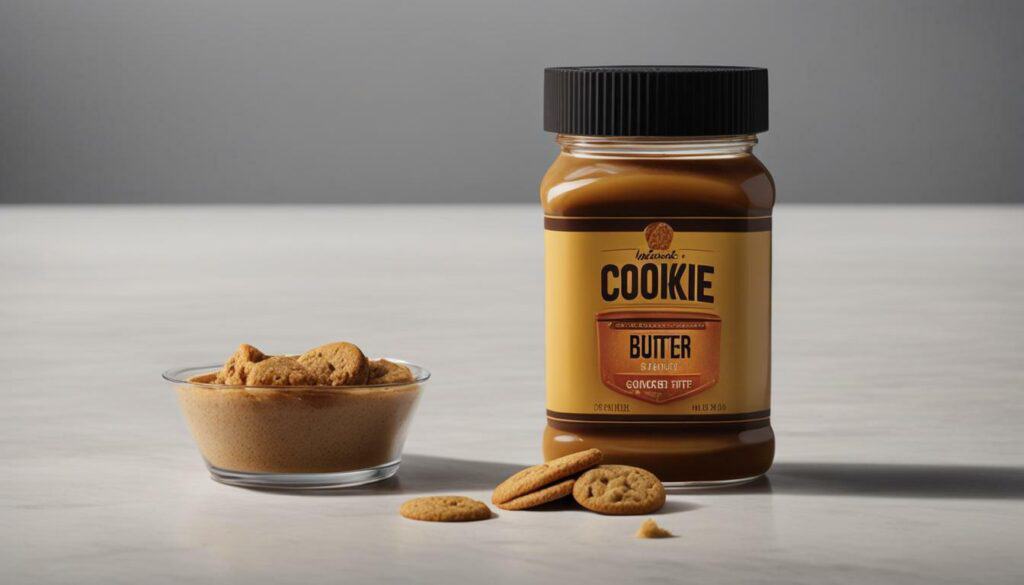
While cookie butter isn’t a significant source of essential nutrients, it’s important to consider its overall nutrient profile. This indulgent spread is made primarily from crushed speculoos cookies, resulting in a deliciously rich and creamy texture that many people enjoy. However, it’s worth noting that cookie butter is quite calorie-dense, with a 2-tablespoon serving containing approximately 180-200 calories.
The majority of these calories come from the high fat content, which can range from 14-16 grams per serving. Despite this, cookie butter is not considered a significant source of essential fats, such as omega-3 fatty acids. It is primarily made up of carbohydrates, containing around 18-20 grams per serving. This makes it an energy-dense treat that can provide a quick boost of fuel when needed.
| Nutrient | Amount per Serving (2 tablespoons) |
|---|---|
| Calories | 180-200 |
| Fat | 14-16 grams |
| Carbohydrates | 18-20 grams |
| Protein | 1-2 grams |
While cookie butter isn’t particularly high in protein, it does provide a small amount, contributing to its overall macronutrient profile. It’s worth mentioning that cookie butter often contains added sugars for flavor enhancement, so it is important to be mindful of the sugar content. Individuals with dietary restrictions should also be aware that cookie butter may contain gluten, dairy, and nuts, as these are common allergens found in its ingredients.
To enjoy cookie butter in a balanced diet, it is recommended to practice portion control and moderation due to its high-calorie and high-fat content. Incorporating it into a well-rounded eating plan alongside nutrient-dense foods can help maintain overall nutritional balance. Remember, variety is key in achieving a healthy lifestyle. So, while cookie butter can be a delightful indulgence, it’s best to enjoy it as a treat rather than a staple in your daily diet.
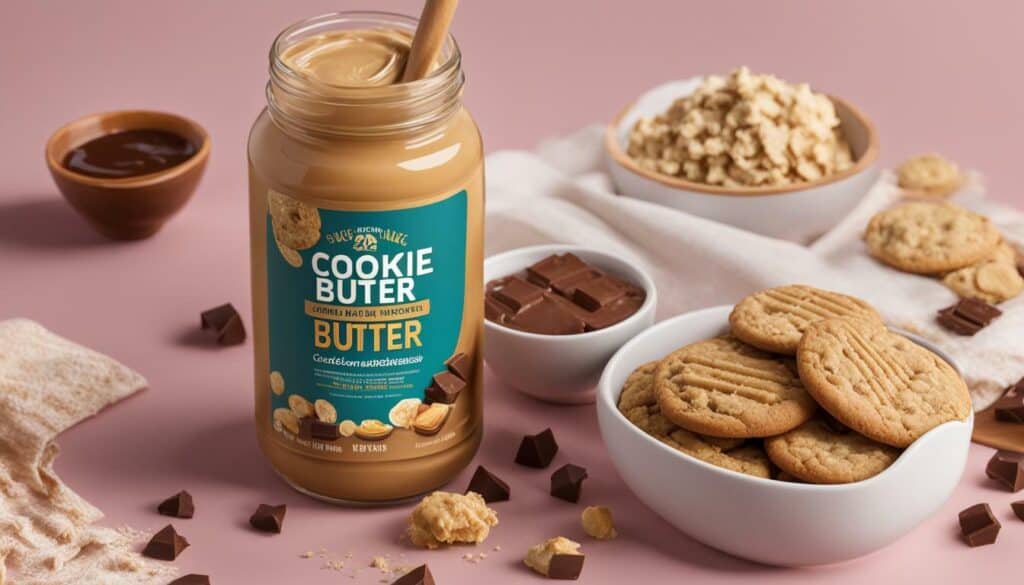
Cookie butter may contain allergens such as gluten, dairy, and nuts, so it’s important for those with dietary restrictions to check the label. For individuals with gluten sensitivities or allergies, it is crucial to ensure that the cookie butter is made from gluten-free ingredients. Some speculoos cookies, which are commonly used to make cookie butter, may contain wheat flour, thereby making the final product unsuitable for those with gluten intolerances. Additionally, dairy allergies or lactose intolerance should be taken into consideration, as some cookie butter brands may include milk or milk derivatives. Lastly, individuals with nut allergies should be cautious, as certain cookie butter variants may contain nuts or traces of nuts due to cross-contamination during production.
When it comes to allergen information, it is always best to consult the product label or the manufacturer to verify the exact ingredients and manufacturing processes. By doing so, you can ensure that your cookie butter experience remains safe and enjoyable.
Allergen Information
It is important to note that every brand of cookie butter may vary in its ingredients and potential allergenic cross-contamination. Some brands offer allergen-free alternatives, making it easier for those with dietary restrictions to enjoy this delicious spread. If you have any concerns about allergens, it is recommended to reach out to the manufacturer for more detailed information.
Remember, being aware of the allergen information and taking necessary precautions is essential to ensure a safe and enjoyable experience with cookie butter.
| Allergens | Possible Presence |
|---|---|
| Gluten | Possible presence in cookie butter made from speculoos cookies containing wheat flour. |
| Dairy | Possible presence in cookie butter containing milk or milk derivatives. |
| Nuts | Possible presence or cross-contamination in cookie butter containing nuts. |
Remember, it is crucial to always double-check the label and allergen information before consuming any product to ensure your safety and well-being.
Recommended Portion Control and Moderation
Due to its high-calorie and high-fat content, it is recommended to practice portion control and moderation when enjoying cookie butter. Although this indulgent spread can be incredibly delicious, it is important to be mindful of your intake to maintain a balanced diet and overall health.
A typical serving of cookie butter is around 2 tablespoons, which can contain approximately 180-200 calories. This may not seem like a lot, but it’s important to remember that those calories primarily come from its high-fat content, ranging from 14-16 grams. To put it into perspective, that’s about the same amount of fat as a small bag of potato chips!
To help control your portion sizes, consider using measuring spoons or a kitchen scale. This will ensure that you’re consuming an appropriate amount and prevent overindulgence. Remember, moderation is key. Instead of slathering cookie butter on every slice of toast or dipping cookies directly into the jar, try spreading a thin layer on a rice cake or adding a dollop to a bowl of oatmeal.
By enjoying cookie butter in moderation and being mindful of your portion sizes, you can still savor its delightful flavor without compromising your health goals. Remember to balance your intake with nutrient-dense foods like fruits, vegetables, whole grains, and lean proteins to ensure a well-rounded diet.
Table: Cookie Butter Nutritional Information
| Nutrient | Amount per serving (2 tablespoons) |
|---|---|
| Calories | 180-200 |
| Fat | 14-16 grams |
| Carbohydrates | 18-20 grams |
| Protein | 1-2 grams |
Note: Cookie butter is not a significant source of vitamins, minerals, or dietary fiber. It may contain allergens such as gluten, dairy, and nuts. Always check the label and consider your dietary restrictions.
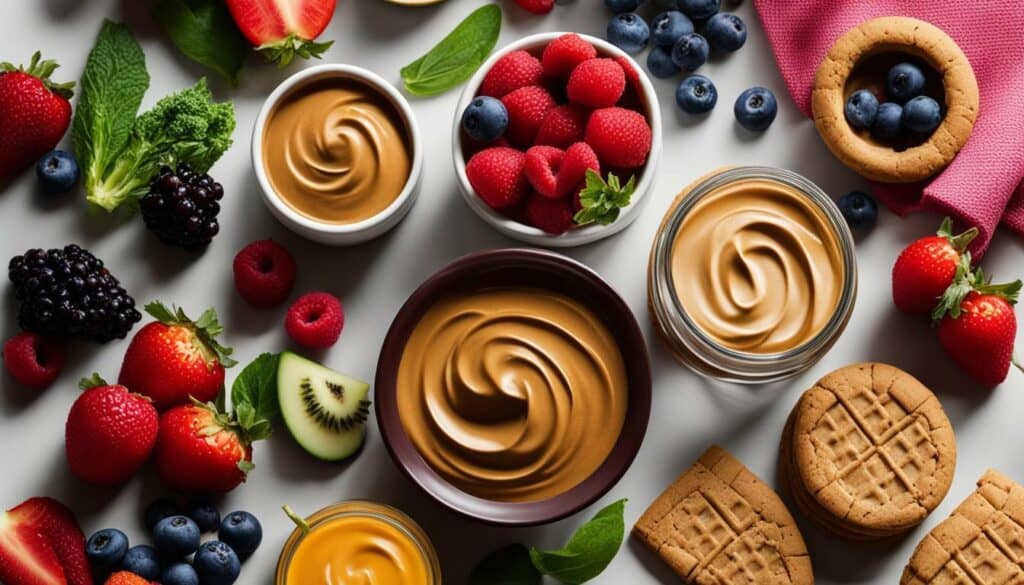
Cookie butter can be a delightful treat when enjoyed in moderation. Whether spread on toast, stirred into a smoothie, or used as a dip for fruit, there are plenty of creative ways to incorporate this indulgence into a balanced diet. Just remember to savor it as an occasional treat rather than a daily staple.
Enjoying Cookie Butter in a Balanced Diet
Although cookie butter should be enjoyed in moderation, it can be a delicious addition to a balanced diet when paired with nutrient-rich foods. While cookie butter is calorie-dense and high in fat, it can still be incorporated into a well-rounded eating plan by practicing portion control and mindful consumption. By using cookie butter sparingly and making smart food choices, you can satisfy your cravings while also nourishing your body with essential vitamins and minerals.
One way to enjoy cookie butter while maintaining a healthy diet is by spreading a thin layer on whole-grain toast or rice cakes. This provides a satisfying crunch and adds a touch of sweetness without going overboard on calories. Additionally, consider pairing cookie butter with fresh fruit, such as sliced apples or bananas. The natural sweetness of the fruit complements the rich flavor of the spread, creating a balanced and satisfying snack.
Another way to incorporate cookie butter into a balanced diet is by using it as a topping for yogurt or oatmeal. A dollop of cookie butter can add indulgence and flavor to an otherwise plain bowl of yogurt or oats. To further enhance the nutritional value, top your creations with a sprinkle of nuts or seeds for added protein and healthy fats.
When enjoying cookie butter, it is important to be mindful of portion sizes. A little goes a long way, and it’s easy to overindulge when faced with such a delectable treat. Remember to savor each bite and appreciate the flavors. By savoring and enjoying smaller portions, you can satisfy your cravings without derailing your healthy eating habits.
Table of Nutritional Composition of Cookie Butter
| Nutrient | Amount per Serving |
|---|---|
| Calories | 180-200 |
| Fat | 14-16 grams |
| Carbohydrates | 18-20 grams |
| Protein | 1-2 grams |
| Sugar | Varies, typically contains added sugars |
| Vitamins & Minerals | Not a significant source |
| Allergens | May contain gluten, dairy, and nuts. Check the label for specific ingredients. |
Remember, cookie butter should be enjoyed as a treat rather than a staple in your diet. By being mindful of your consumption and incorporating it into a balanced eating plan, you can savor the indulgence without compromising your overall health and wellness.
Cookie butter can be enjoyed in a variety of ways, and in this section, we’ll share some delicious ideas to satisfy your cravings. Whether you’re looking for a simple snack or a unique twist on a classic recipe, these creative ideas will surely impress your taste buds.
1. Cookie Butter and Fruit Dip: Combine cookie butter with Greek yogurt to create a creamy and flavorful dip for your favorite fruits. It’s a healthy and indulgent option that will make your fruit even more irresistible.
2. Cookie Butter Stuffed French Toast: Take your breakfast to the next level by spreading a generous amount of cookie butter between two slices of bread before dipping them into a mixture of eggs and milk. Cook to golden perfection and drizzle with maple syrup for a decadent morning treat.
3. Cookie Butter Milkshake: Blend cookie butter, vanilla ice cream, and milk for a rich and creamy milkshake that will satisfy your sweet tooth. Top it off with whipped cream and a sprinkle of crushed cookies for an extra touch of indulgence.
4. Cookie Butter Swirl Brownies: Add dollops of cookie butter to your favorite homemade or boxed brownie batter before baking. As the brownies bake, the cookie butter will create a delicious and gooey swirl throughout, adding a delightful surprise to every bite.
Give these mouthwatering ideas a try, and let your creativity shine with cookie butter. Remember to enjoy this delightful treat in moderation as part of a balanced diet. Indulge yourself while savoring the unique flavors of cookie butter!
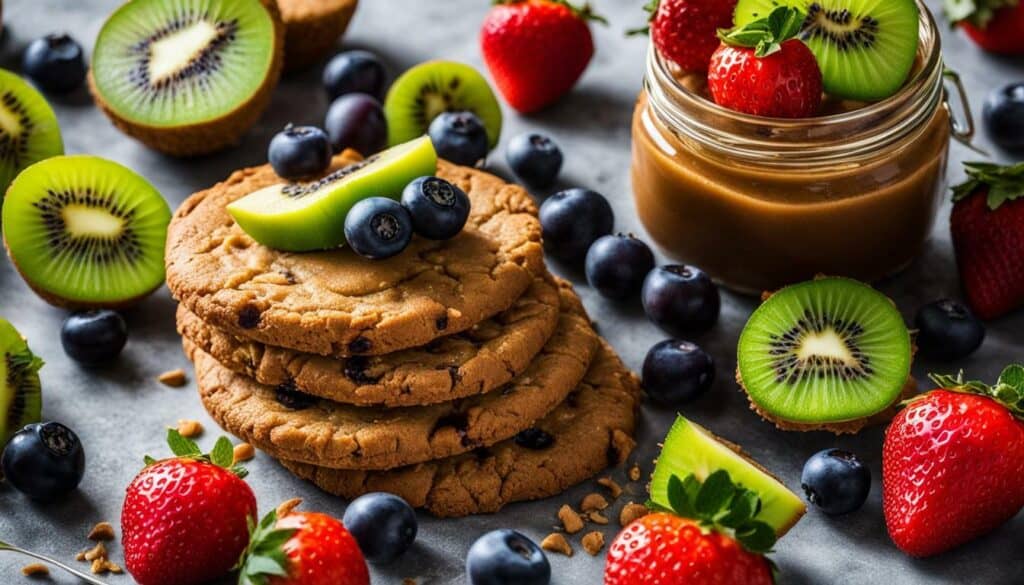
| Recipe | Ingredients | Instructions |
|---|---|---|
| Cookie Butter and Fruit Dip | – 1 cup Greek yogurt – 2 tablespoons cookie butter | 1. In a bowl, combine Greek yogurt and cookie butter. 2. Mix well until smooth and creamy. 3. Serve with your favorite fruits for dipping. |
| Cookie Butter Stuffed French Toast | – 4 slices of bread – 1/4 cup cookie butter – 2 eggs – 1/4 cup milk – Maple syrup for serving | 1. Spread cookie butter on two slices of bread. 2. Sandwich the slices together with the remaining bread. 3. In a shallow bowl, whisk together eggs and milk. 4. Dip the sandwiched bread into the egg mixture, coating both sides. 5. Cook in a preheated skillet over medium heat until golden brown on both sides. 6. Serve with maple syrup. |
| Cookie Butter Milkshake | – 2 scoops vanilla ice cream – 1/4 cup cookie butter – 1/2 cup milk – Whipped cream and crushed cookies for topping (optional) | 1. In a blender, combine vanilla ice cream, cookie butter, and milk. 2. Blend until smooth and creamy. 3. Pour into a glass and top with whipped cream and crushed cookies, if desired. |
| Cookie Butter Swirl Brownies | – 1 box of brownie mix – Cookie butter | 1. Prepare the brownie mix according to package instructions. 2. Pour the brownie batter into a greased baking dish. 3. Add dollops of cookie butter on top of the batter. 4. Use a knife to swirl the cookie butter into the brownie batter. 5. Bake according to package instructions. 6. Allow to cool before cutting into squares and serving. |
In Conclusion: A Delightful and Nutritious Indulgence
Cookie butter is a tasty indulgence that can be enjoyed in moderation as part of a balanced diet, and understanding its nutrition facts is key to making informed dietary choices. This popular spread, typically made from crushed speculoos cookies, is calorie-dense, with a 2-tablespoon serving containing approximately 180-200 calories. The majority of these calories come from the high-fat content, which can range from 14-16 grams per serving.
While cookie butter is not a significant source of protein, it does provide a small amount of about 1-2 grams per serving. The spread is primarily composed of carbohydrates, with around 18-20 grams per serving. It is important to note that cookie butter often contains added sugars for flavor enhancement, so it is crucial to be mindful of the sugar content.
When it comes to vitamins, minerals, and dietary fiber, cookie butter is not a significant source. Individuals with dietary restrictions should also be aware that cookie butter may contain gluten, dairy, and nuts, so checking the label is recommended. Due to its high-calorie and high-fat content, practicing portion control and moderation is crucial.
Despite these considerations, cookie butter can be enjoyed in a variety of ways. Whether spread on toast, swirled into yogurt, or used as a topping for pancakes, it adds a deliciously indulgent touch to meals and snacks. Just remember to incorporate it into a balanced diet alongside nutrient-dense foods to ensure overall nutritional well-being.
FAQ
Q: What is cookie butter?
A: Cookie butter is a popular and indulgent spread made from crushed cookies, typically speculoos cookies.
Q: How many calories are in cookie butter?
A: A 2-tablespoon serving of cookie butter contains approximately 180-200 calories.
Q: How much fat does cookie butter contain?
A: Cookie butter is calorie-dense due to its high-fat content, which can range from 14-16 grams per serving.
Q: What is the carbohydrate composition of cookie butter?
A: Cookie butter is primarily made up of carbohydrates, with around 18-20 grams per serving.
Q: Does cookie butter provide any protein?
A: While cookie butter is not a significant source of protein, it does provide a small amount of about 1-2 grams per serving.
Q: Does cookie butter contain added sugars?
A: Yes, cookie butter often contains added sugars for flavor enhancement, so it is important to be mindful of the sugar content.
Q: Is cookie butter a significant source of vitamins and minerals?
A: No, cookie butter is not a significant source of vitamins, minerals, or dietary fiber.
Q: Does cookie butter contain any allergens?
A: Cookie butter may contain gluten, dairy, and nuts, so individuals with dietary restrictions should check the label.
Q: How should I consume cookie butter?
A: It is recommended to practice portion control and moderation due to its high-calorie and high-fat content. Cookie butter should be enjoyed as part of a balanced diet alongside nutrient-dense foods.
What Are the Nutritional Facts of a BLT Sandwich?
Blt sandwich nutrition facts revealed: A classic BLT sandwich consists of crispy bacon, fresh lettuce, juicy tomatoes, and mayo. Per serving, it typically provides around 390 calories, 18g of protein, 30g of carbohydrates, and 22g of fat. The bacon is a good source of protein, while the lettuce and tomatoes offer essential vitamins and fiber.

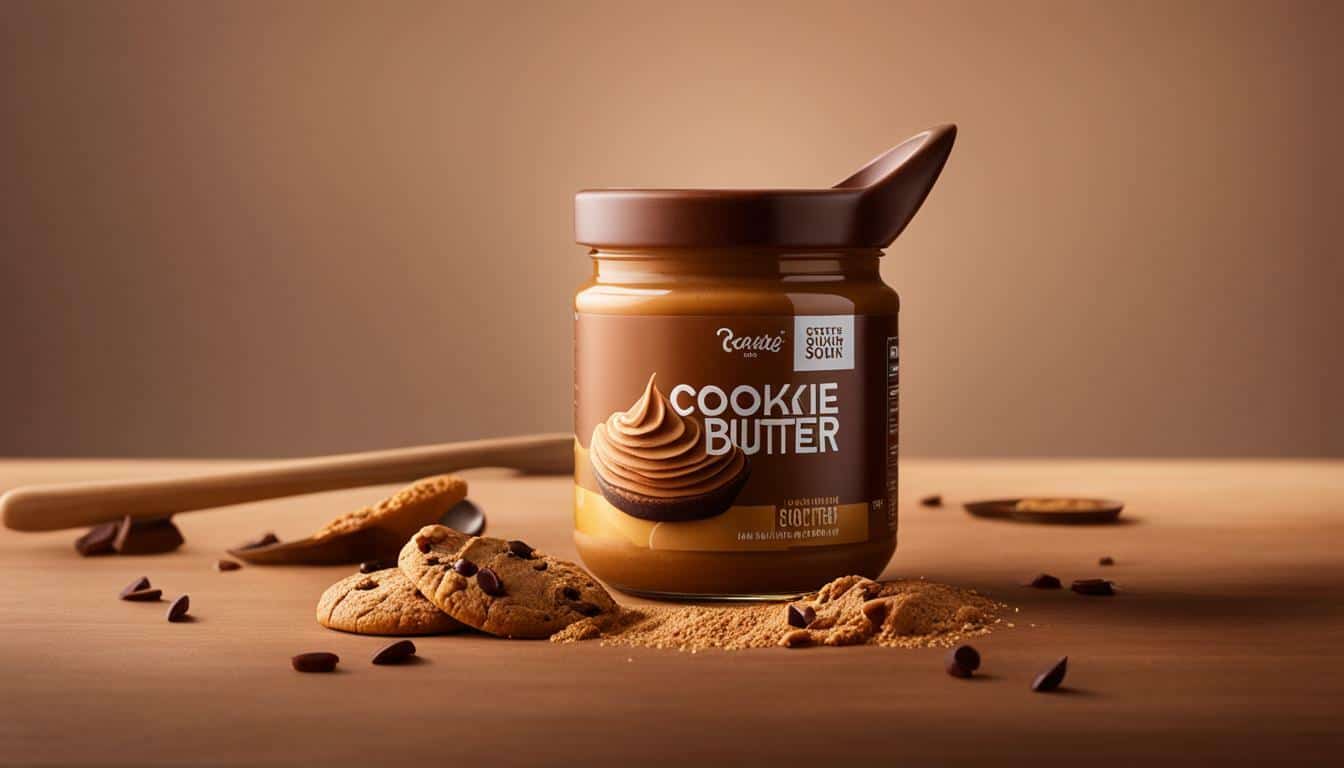



Leave a Reply